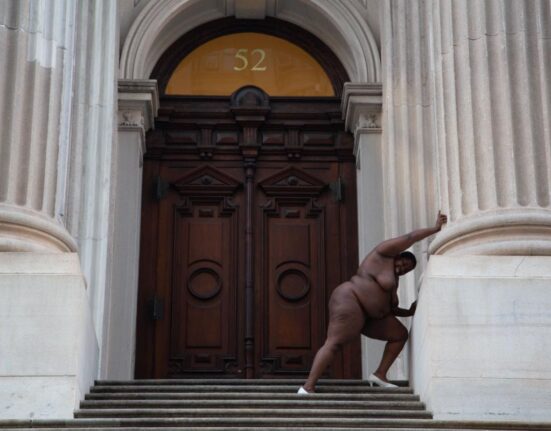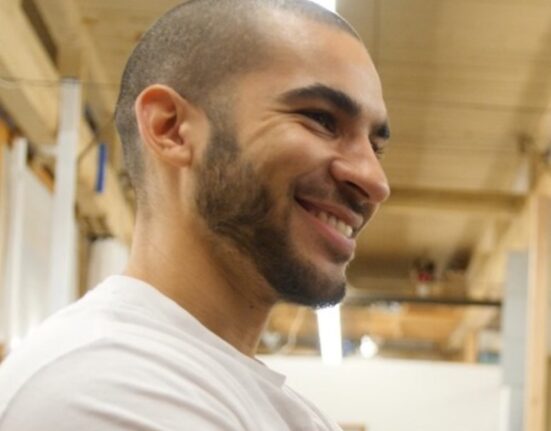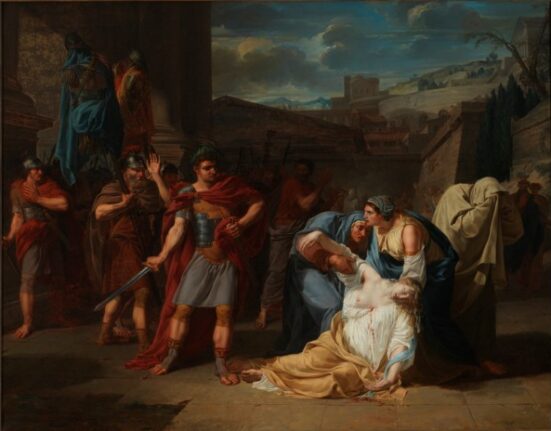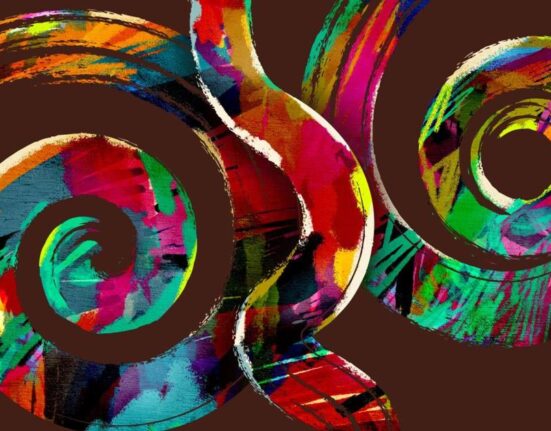journeying across an american landscape
In an evocative exploration of the American West, artist Leslie Wayne’s latest exhibition, ‘This Land,’ is now on view at Jack Shainman Gallery in New York. Through two distinct yet interconnected bodies of work, Wayne investigates the essence of geological space, blending perception with memory to create a new portrayal of the landscape. Drawing inspiration from Woody Guthrie’s iconic song ‘This Land is Your Land,’ Wayne offers a contemporary perspective on Manifest Destiny, crafting works that resonate with sensorial, memorial, and tectonic undertones. Her dimensional abstract paintings and compact observational pieces invite viewers into a sensory journey, evoking the majestic and multifaceted nature of the American West.
In a recent interview with designboom, Leslie Wayne shared insights into her artistic process and the personal and cultural narratives embedded in her work, on view at Jack Shainman Gallery, 513 West 20th Street, New York, from June 4th through August 2nd, 2024.

installation view, Leslie Wayne, This Land, 2024, Jack Shainman Gallery, 513 W 20th Street, New York, NY
© Leslie Wayne. courtesy of the artist and Jack Shainman Gallery, New York. photo by Dan Bradica Studio
a dialogue with artist leslie wayne
designboom (DB): Your exhibition ’This Land’ is said to explore the American west through perception and memory. Can you elaborate on how these two elements influence your artistic process?
Leslie Wayne (LW): Perception is just an interpretation really, of what one sees, and while the paintings in ‘This Land is Your Land’ series were made directly from the photographs I took on a flight to the Pacific Northwest, they are infused with the feelings and memories I hold dear of my childhood. I’ve lived in New York since 1982, but I grew up in California and I still have a very strong attachment to the West Coast and to the geology and geography of the West. Even the abstract work in which I am manipulating thick layers of paint, I am drawing on those sensations I remember having of being in nature where the tectonic and geologic forces are right there for one to see and feel — millions of years of layered strata, of compression and subduction, of gravity and erosion, and certainly of the shifting plates that cause earthquakes.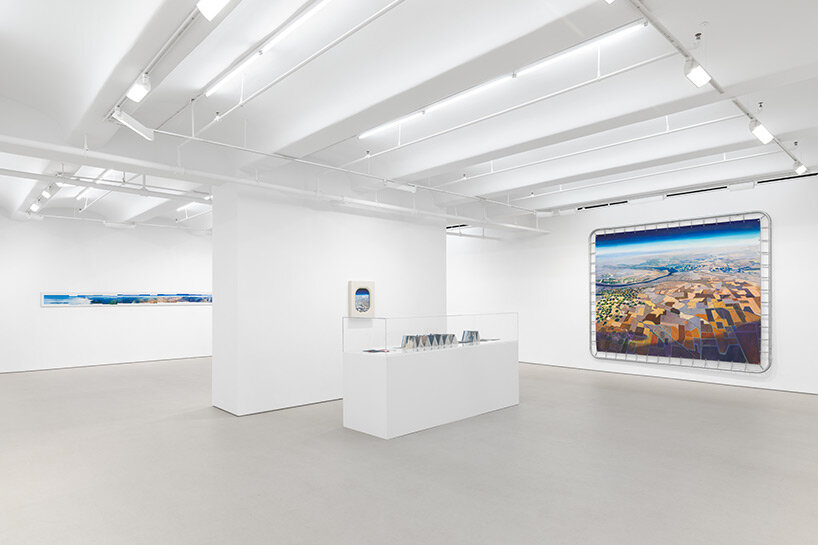
installation view, Leslie Wayne, This Land, 2024, Jack Shainman Gallery, 513 W 20th Street, New York, NY
© Leslie Wayne. courtesy of the artist and Jack Shainman Gallery, New York. photo by Dan Bradica Studio
DB: The show is named after Woody Guthrie’s song ’This Land is Your Land.’ How does this iconic song resonate with your work, and why did you choose it as the title?
LW: I remember thinking of this song as we were flying over the Rockies and I started taking photographs. It was a spontaneous response to the majesty of what was unfolding below. But later as this project started to develop in my mind, I began thinking about the lyrics and what they meant when Guthrie wrote them in 1940 as an anti-war protest, and what they might mean today in a moment of reckoning about who we are as a nation, and whose land we have colonized and occupied.
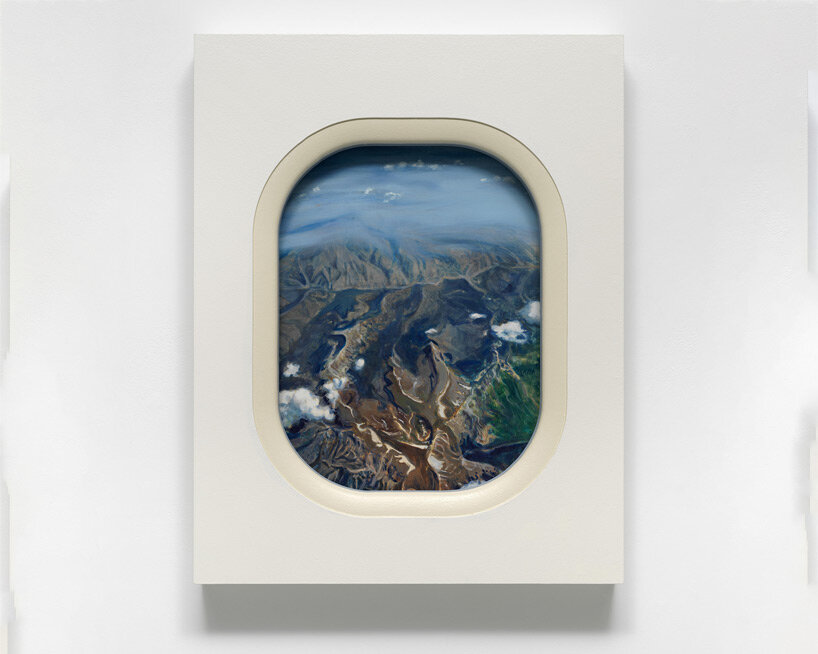
installation view, Leslie Wayne, This Land, 2024, Jack Shainman Gallery, 513 W 20th Street, New York, NY
© Leslie Wayne. courtesy of the artist and Jack Shainman Gallery, New York. photo by Dan Bradica Studio
DB: Can you describe the techniques and materials you used to achieve the effects in your work, especially the ‘metronome-like’ planks with their cascading layers of paint?
LW: I work in oil paint, as it stays soft and malleable long enough for me to manipulate it before it sets. There are several techniques, depending on what I’m looking to achieve. In some cases, I will build up many thin layers of color to create a kind of thick skin that I can then push and fold over to reveal the colors beneath. In others where I want the forces of gravity to be dominant, I will make the paint so viscous that it wants to slide down from its own weight. And at other times, I’m building up dimension by collaging bits and pieces of dried paint that resemble old driftwood.
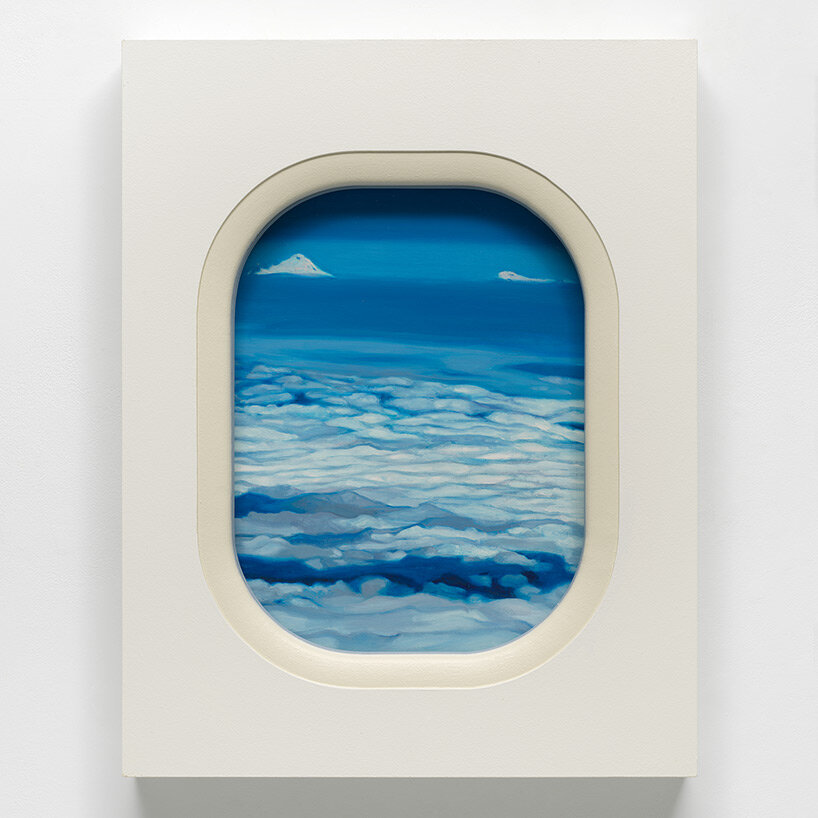
installation view, Leslie Wayne, This Land, 2024, Jack Shainman Gallery, 513 W 20th Street, New York, NY
© Leslie Wayne. courtesy of the artist and Jack Shainman Gallery, New York. photo by Dan Bradica Studio
DB: In the series, you recreate views from an airplane window — what inspired you to frame these paintings in such a specific manner?
LW: There is no one who can’t relate to that experience of looking out an airplane window and being mesmerized by the view. It’s universal and transporting. I wanted not so much to simply replicate the window, but to provide that same sensation of being transported. I have incorporated images of windows in my work for a long time now – the window is a metaphor for so much. A window is a barrier, but it is also transparent. It can break but can also be repaired. It protects but is fragile. And the airplane window is universally understood.
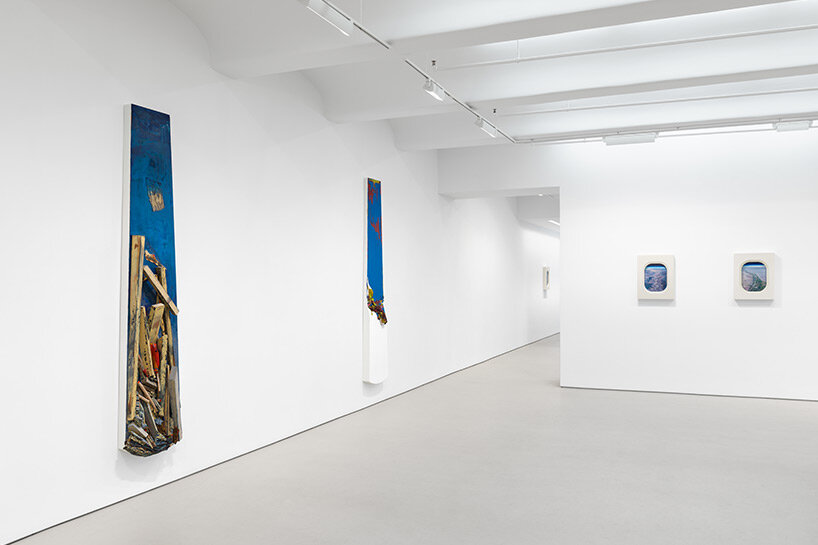
installation view, Leslie Wayne, This Land, 2024, Jack Shainman Gallery, 513 W 20th Street, New York, NY
© Leslie Wayne. courtesy of the artist and Jack Shainman Gallery, New York. photo by Dan Bradica Studio
DB: How did you approach translating an extensive landscape into the 22-foot-long painted scroll ‘From the Rockies to the Cascades?’
LW: I took each of the 45+ photos I had taken on that flight and painted them contiguously, in the order in which they were shot. But because I had no idea I would pursue this project when I took them, I did not leave my camera up against the window the entire time. And when you’re flying 500 miles an hour, a mere 30 seconds can change the scenery dramatically from one image to the next. So there are many abrupt transitions that I decided to lean into, as a way of acknowledging the way we actually experience looking out an airplane window as we’re flying across the country.


